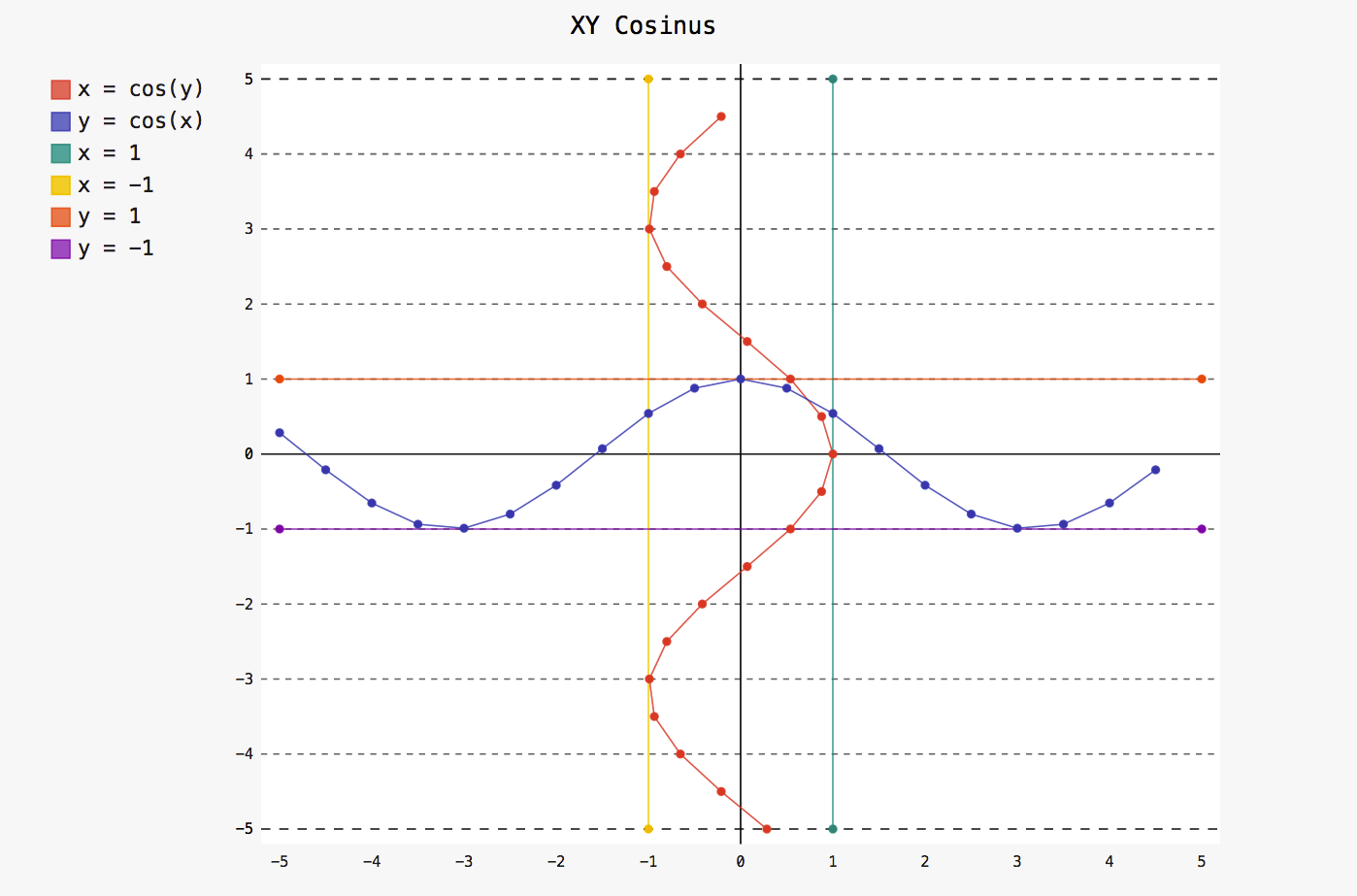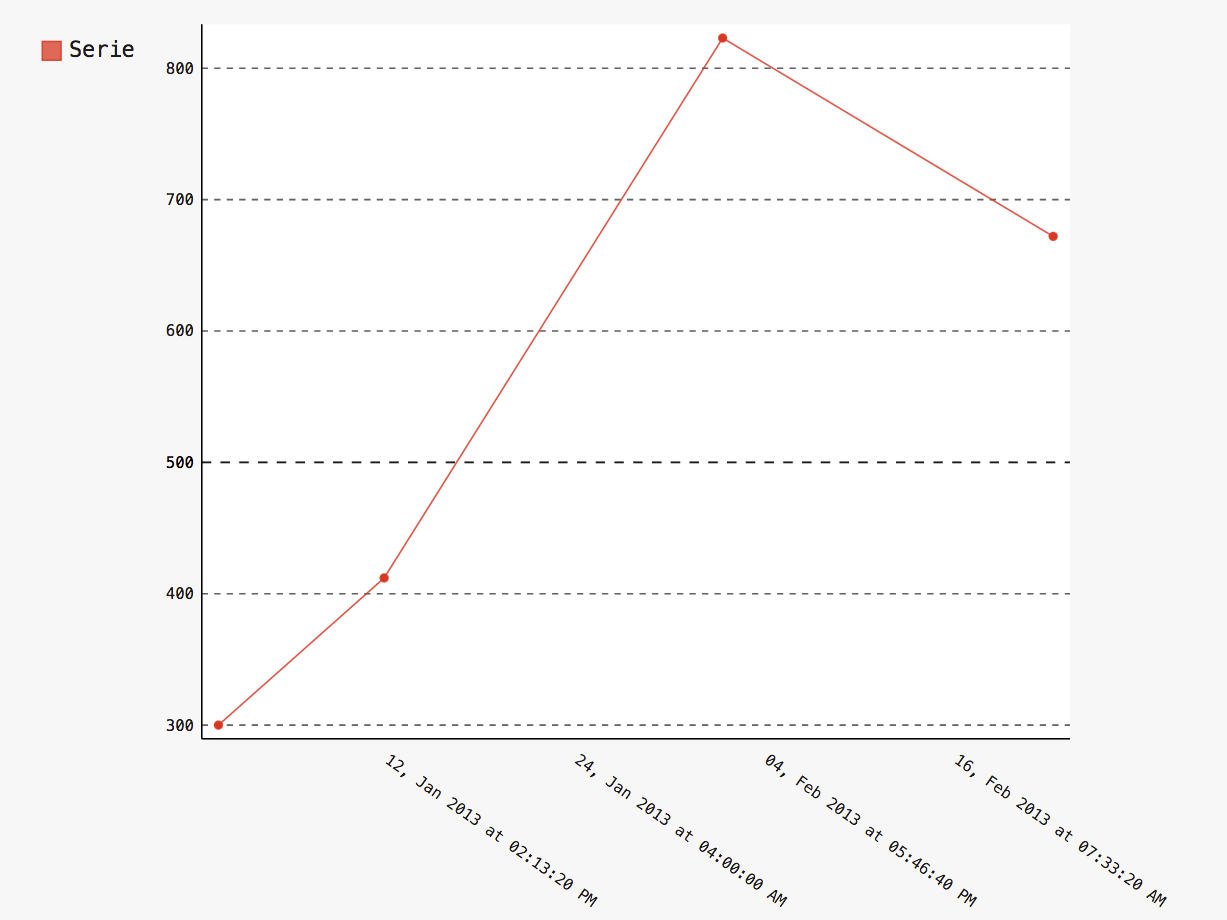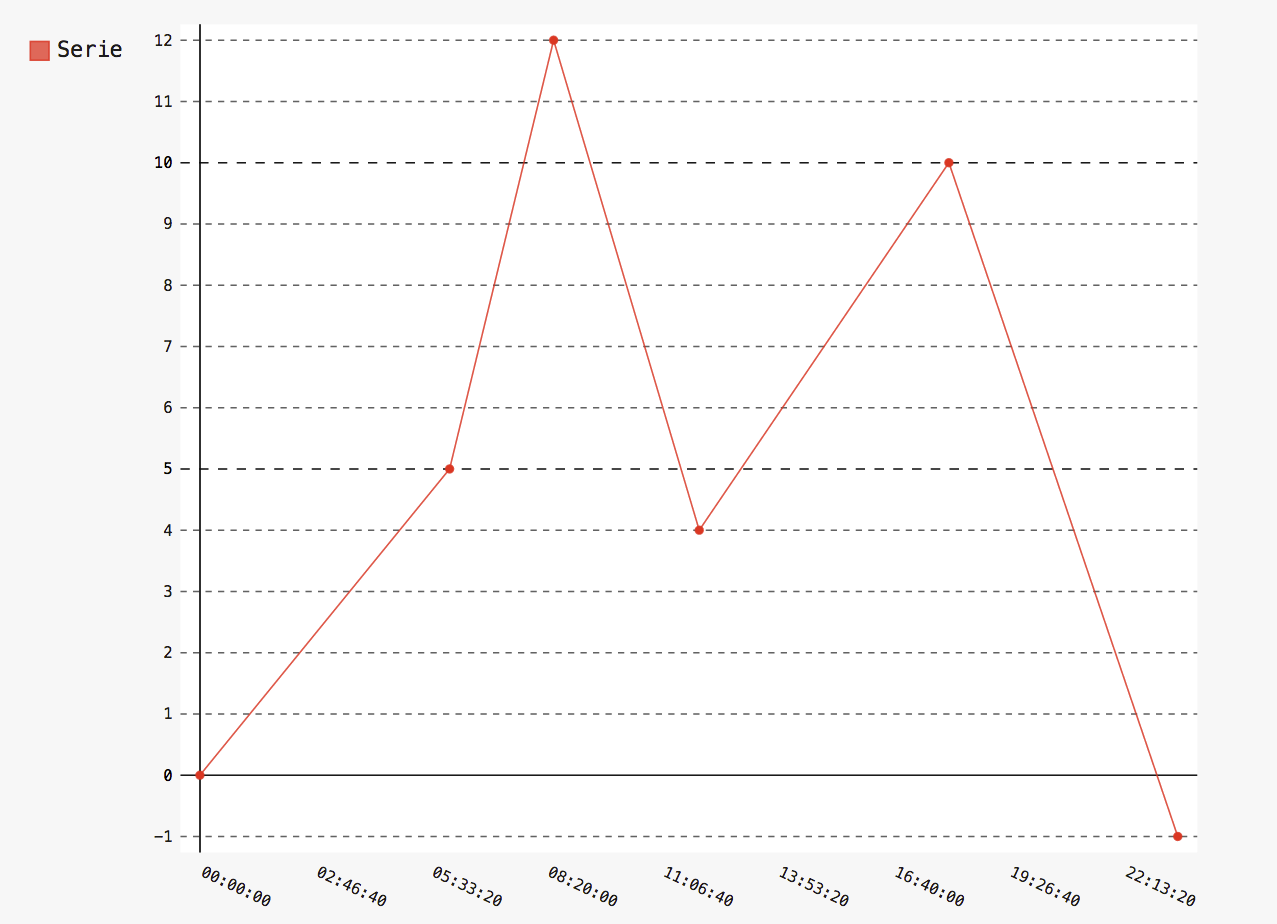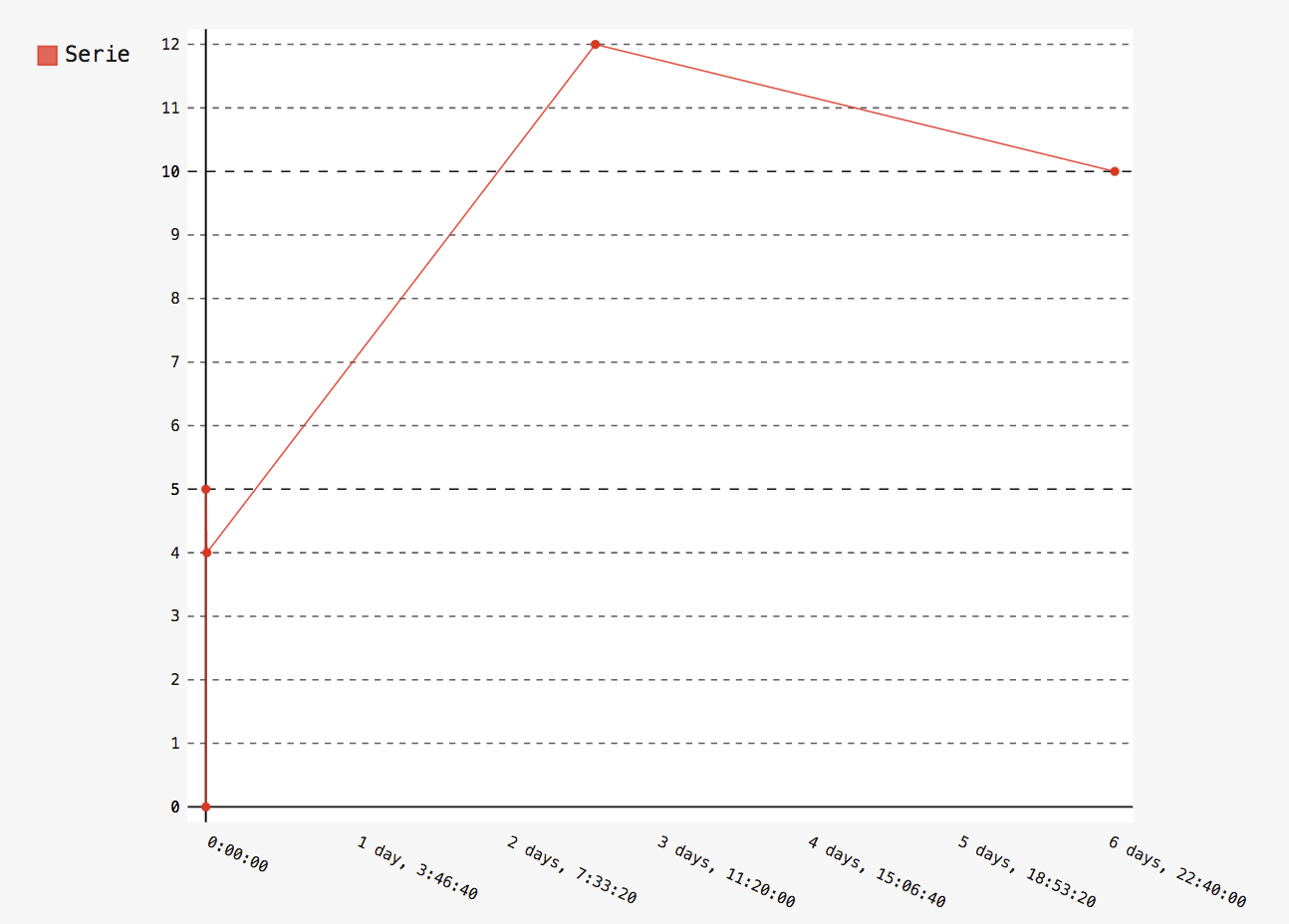Python框架-pygal之XY线
基本XY线:
import pygal from math import cos """ XY线是将各个点用直线连接起来的折线图 需提供一个横纵坐标元组作为元素的列表 """ xy_chart = pygal.XY() xy_chart.title = 'XY Cosinus' xy_chart.add('x = cos(y)', [(cos(x / 10.), x / 10.) for x in range(-50, 50, 5)]) xy_chart.add('y = cos(x)', [(x / 10., cos(x / 10.)) for x in range(-50, 50, 5)]) xy_chart.add('x = 1', [(1, -5), (1, 5)]) xy_chart.add('x = -1', [(-1, -5), (-1, 5)]) xy_chart.add('y = 1', [(-5, 1), (5, 1)]) xy_chart.add('y = -1', [(-5, -1), (5, -1)]) xy_chart.render_to_file('bar_chart.svg')

散点图:
import pygal xy_chart = pygal.XY(stroke=False) xy_chart.title = 'Correlation' xy_chart.add('A', [(0, 0), (.1, .2), (.3, .1), (.5, 1), (.8, .6), (1, 1.08), (1.3, 1.1), (2, 3.23), (2.43, 2)]) xy_chart.add('B', [(.1, .15), (.12, .23), (.4, .3), (.6, .4), (.21, .21), (.5, .3), (.6, .8), (.7, .8)]) xy_chart.add('C', [(.05, .01), (.13, .02), (1.5, 1.7), (1.52, 1.6), (1.8, 1.63), (1.5, 1.82), (1.7, 1.23), (2.1, 2.23), (2.3, 1.98)]) xy_chart.render_to_file('bar_chart.svg')

日期:
你可以使用日期模块绘制与日期有关的图表
DateTime
import pygal from datetime import datetime datetimeline = pygal.DateTimeLine( x_label_rotation=35, truncate_label=-1, x_value_formatter=lambda dt: dt.strftime('%d, %b %Y at %I:%M:%S %p')) datetimeline.add("Serie", [ (datetime(2013, 1, 2, 12, 0), 300), (datetime(2013, 1, 12, 14, 30, 45), 412), (datetime(2013, 2, 2, 6), 823), (datetime(2013, 2, 22, 9, 45), 672) ]) datetimeline.render_to_file('bar_chart.svg')

Date
import pygal from datetime import date dateline = pygal.DateLine(x_label_rotation=25) dateline.x_labels = [ date(2013, 1, 1), date(2013, 7, 1), date(2014, 1, 1), date(2014, 7, 1), date(2015, 1, 1), date(2015, 7, 1) ] dateline.add("Serie", [ (date(2013, 1, 2), 213), (date(2013, 8, 2), 281), (date(2014, 12, 7), 198), (date(2015, 3, 21), 120) ]) dateline.render_to_file('bar_chart.svg')

Time
import pygal from datetime import time dateline = pygal.TimeLine(x_label_rotation=25) dateline.add("Serie", [ (time(), 0), (time(6), 5), (time(8, 30), 12), (time(11, 59, 59), 4), (time(18), 10), (time(23, 30), -1), ]) dateline.render_to_file('bar_chart.svg')

TimeDelta
import pygal from datetime import timedelta dateline = pygal.TimeDeltaLine(x_label_rotation=25) dateline.add("Serie", [ (timedelta(), 0), (timedelta(seconds=6), 5), (timedelta(minutes=11, seconds=59), 4), (timedelta(days=3, microseconds=30), 12), (timedelta(weeks=1), 10), ]) dateline.render_to_file('bar_chart.svg')



